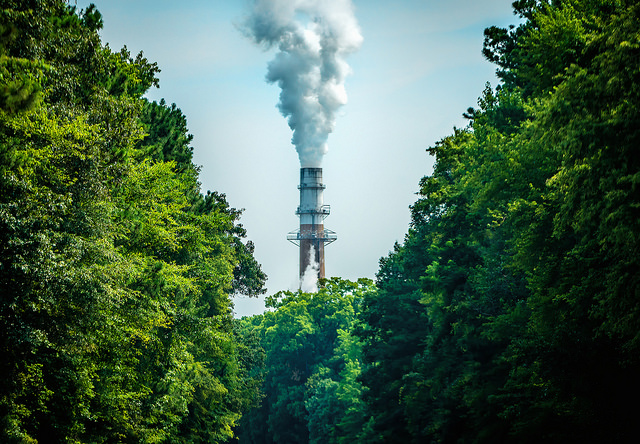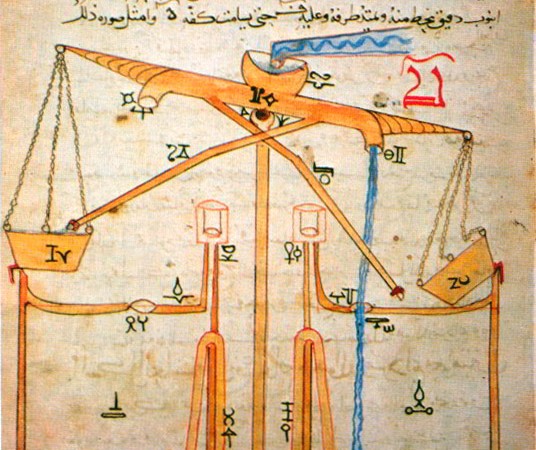Learn how to delay the send of your emails to be more productive and / or show you're working when secretly you're enjoying coffee with friends

How to calculate your carbon footprint: How bad are bananas?
“By the time we see that climate change is really bad, your ability to fix it is extremely limited… The carbon gets up there, but the heating effect is delayed. And then the effect of that heat on the species and ecosystem is delayed. That means that even when you turn virtuous, things are actually going to get worse for quite a while.” – Bill Gates
In this article, I’m going to share Mike Berners-Lee’s methodology for calculating your carbon footprint.
Author of How Bad Are Bananas, Environment columnist at The Guardian and Director of Small World Consulting, Mike is a leading expert of calculating carbon footprints. He helped create this interactive carbon footprint calculator.
Bill Bryson, award-winning and bestselling author, wrote of How Bad Are Bananas:
‘Terrific! I can’t remember the last time I read a book that was more fascinating and useful and enjoyable all at the same time.’
And I would second that. The book is the best way to develop your carbon footprint radar.
‘Radar’ is an important word here, because if you’re looking to help the environment, you must get perspective.
Skimping on the paper towel (10 g CO2e), recycling a plastic carrier bag (10 g CO2e) and turning off the computer for an hour (63 g CO2e) makes little impact – yet is emotionally and mentally draining.
Instant carbon footprints to develop your radar:
- Text message: 0.014 g CO2e
- Drying your hands:
- 3 g CO2e Dyson Airblade
- 10 g CO2e one paper towel
- 20 g CO2e standard electric drier
- 1 Hour’s TV:
- 34 g CO2e 15-inch LCD flat screen
- 76 g CO2e 28-inch CRT TV
- 220 g CO2e 42-inch plasma screen
- 1 Hour’s iMac 21.5-inch (2010 model): 63 g CO2e
- Pint of Beer: 500g CO2e local bottled beer from the shop or a pint of foreign beer in a pub
- Loaf of Bread: 1 kg CO2e
- Steak (4-ounce beef): 2kg CO2e
- Congested Commute by Car: 22kg CO2e per 5 miles
- Every working day for a year would be 4.8 tonnes CO2e
- A hectare of deforestation: 500 tonnes CO2e
Carbon Intuition
If you want to make a notable difference you must first develop a carbon intuition and then choose your battles.
While well intentioned, there’s no point worrying over the TV being on standby (5 kg CO2e for an entire year) when a single 5-mile commute by car creates 4.4x as much (22 kg CO2e).
Equally you must recognise everything has a carbon footprint. This includes tap water (0.14 g CO2e), a loaf of bread (1 kg CO2e) and even a Google search (0.2 g CO2e).
Two 800g loaves of bread have the same carbon footprint as one 4-ounce beef steak (excluding cooking).
And to push the point of perspective home, thanks to administration error, it turns out China produces 700 million tonnes more CO2 per year than previously thought. That’s the equivalent of 63.6 billion miles in a car.
How to Create a Carbon Sensei-Sense
Mike explains there are some general rules for becoming a carbon footprint expert. To intuitively know what creates the biggest carbon footprint, know that there are 3 things that tend to have the biggest impact and it’s these you should focus on:
- Heat
- Light
- Crude Oil
Heat
Anything that requires or produces heat: a kettle, washing machine, radiators, hair dryers, ovens, hot water, chemical processes and fires have a large carbon footprint.
Light
Most lights in the world are still energy inefficient: incandescent light bulbs. They work by heating (see above) a filament to a high temperature. Leaving such a bulb (100 watt) on for an entire year creates 500 kg CO2e, versus 90 kg CO2e for a low-energy or LED bulb. This is about the same as that created in the manufacturing of 2 low-cost laptops.
Crude Oil
Crude Oil is turned into many things, especially plastics and fuel. It’s the fuel you ought to focus on. Petrol and aviation fuel especially.
Flying from London to Hong Kong and back again creates an average of 4.6 tonnes of CO2e. One trip is equal to 340,000 disposable carrier bags. Again, it’s that idea of perspective.
What can you do? If you’re going to fly, go for longer and fly less frequently. Take one 3-week (or even better, 3-month) holiday instead of two 1.5-week holidays. Go somewhere closer to home. Make sure that where you’re going really has something you can’t get at home. For everything else, go local.
What’s CO2e?
From How Bad Are Bananas:
Man-made climate change, also known as global warming, is caused by the release of certain types of gas into the atmosphere. The dominant man-made greenhouse gas is carbon dioxide (CO2), which is emitted whenever we burn fossil fuels in homes, factories or power stations. But other greenhouse gases are also important.
Methane (CH4), for example, which is emitted mainly by agriculture and landfill sites, is 25 times more potent per kilogram than carbon dioxide. Even more potent but emitted in smaller quantities are nitrous oxide (N2O), which is about 300 times more potent than carbon dioxide and released mainly from industrial processes and farming, and refrigerant gases, which are typically several thousand times more potent than carbon dioxide.
In the UK, the total impact on the climate breaks down like this: carbon dioxide (86 per cent), methane (7 per cent), nitrous oxide (6 per cent) and refrigerant gases (1 per cent).
Given that a single item or activity can cause multiple different greenhouse gases to be emitted, each in different quantities, a carbon footprint if written out in full could get pretty confusing. To avoid this, the convention is to express a carbon footprint in terms of carbon dioxide equivalent (CO2e). This means the total climate change impact of all the greenhouse gases caused by an item or activity rolled into one and expressed in terms of the amount of carbon dioxide that would have the same impact.
What’s the average person’s carbon footprint?
Mike estimates:
- 7 tonnes CO2e per year world average
- 15 tonnes CO2e per year UK average
- 28 tonnes CO2e per year USA average
- 30 tonnes CO2e per year Australia average
If you’re from the UK like me, you can see how one long-haul return flight (4.6 tonnes) is almost one-third of your annual carbon footprint.
How to significantly reduce your carbon footprint (30% or more)
Forget scrimping. Being Mr Frugal and using one piece of loo roll instead of two is not going to save the world. Work backwards and take on the three biggest things first:
- Cut long-haul flights
- Just reducing one may already hit your 30% reduction target
- If you have to go for work, ask if you can do video conference calls instead
- Go for one long holiday instead of two
- Go somewhere closer to home
- Change the car
- Get a second-hand electric or hybrid
- Every car is different, but a small efficient car still creates 1.8 kg CO2e per mile in open roads
- Swap to a second-hand bicycle
- Get public transport
- Cut the heating
- Calculate how much energy it takes to heat your home (measure in kWh)
- Multiply the kWh figure (e.g. 10,000 kWh) to either:
- 244 g CO2e if you use a modern (90 per cent efficient) gas boiler
- 400 g CO2e using an old, 55 per cent efficient gas boiler
- 600 g CO2e from UK grid electricity
- (Example, 10,000 kWh x 400 = 4,000,000 g CO2e or 4,000 kg CO2e or 4 tonnes CO2e)
- If you share the house with people, divide the figure per person
- Get the Nest Thermostat which knows when you’re in and out the house (better than a standard timer), learns your habits, and can be controlled remotely e.g. if you’re on holiday
How to instantly have a carbon positive footprint
- Plant trees
- Deforestation of one hectare (100m x 100m) = 500 tonnes of CO2e
- this is the same as 33 years’ of personal CO2e (UK average)
- Therefore, planting a hectare of trees would give you a carbon positive footprint of about 500 tonnes (note – I’m actually a bit unsure on this, if anyone can clarify let me know @tomchurch)
- Trees For The Future is a respected and proven charity I’ve supported for many years, where a donation of $500 enables over 2,000 trees to be planted (4 hectares) = -2,000 tonnes of CO2e.
- A one-off large donation of $500 or more will offset your carbon footprint for life
- Deforestation of one hectare (100m x 100m) = 500 tonnes of CO2e
- Wind Turbines
- Support the construction of a wind turbine
- Remember, it’s not just CO2 that’s bad, but other gases too. While trees hold carbon in their biomass, they don’t stop the production of other gasses from coal power stations and other energy producers.
- Wind Turbines have a largely positive net saving of CO2e, however Mike warns against micro-turbines. Turbines of 9m diameter or less do not offer as much carbon-saving per £ as do macro-renewables (bigger turbines). So rather than put all your money into one small turbine, consider a co-operative.
- Abundance Investment is platform that enables you to invest in wind, hydro and solar. I’ve invested into a wind turbine and a solar project. Not only does this give you a positive carbon footprint in the longterm, but also gives you financial returns.
- Support the construction of a wind turbine
How to save the world in the long-term
When I had tea and cake with Dr Ann Clarke, a biologist at Nottingham University, she told me a story of how after having given a lecture in the 1980s with three other prominent scientists about their plans to preserve biodiversity and prevent climate change, a man came up to her in the cafeteria and said, “you’re wasting your time. There is one thing that will solve all of this, and it is to stop population growth.”
“He was right, of course,” said Dr Clarke.
The cause of everything is us, humans. The more of us, the bigger the problem. One way to solve all of our problems then is to have fewer children.
According to Mike, the average UK lifespan creates 373 tonnes CO2e. So an obvious point is to have 1 instead of 2, 2 instead of 3, 3 instead of 4 children.
7 Actions to do right now to be carbon-positive
- Donate $500 (£329) to Trees For The Future to be carbon positive for life
- Invest (£5 or more) through Abundance Investment to help create clean energy
- Take one long holiday abroad instead of two small trips
- If you need to travel for work, ask to do a video conference call
- Change your car to an electric, hybrid, or even better, bicycle
- Cut the heating in your house, get a Nest Thermostat
- Tune your carbon footprint sense with Mike Berners-Lee’s How Bad Are Bananas
I hope you can see that focusing on a few big changes will have an effect 10x or 100x more effective than thinking about a thousand small things.
While not scrimping over the TV’s standby switch will leave a bad taste in many people’s mouths, it has to be accepted that there’s a carbon footprint effect of everything you buy. While some things will be better than others, you always have a negative effect. Which is why it’s more important not to think so much about how to reduce, but how to be positive: planting trees and creating clean energy.
Image: by Bill Dickinson via Flickr
Previous Post: At the top of her game


